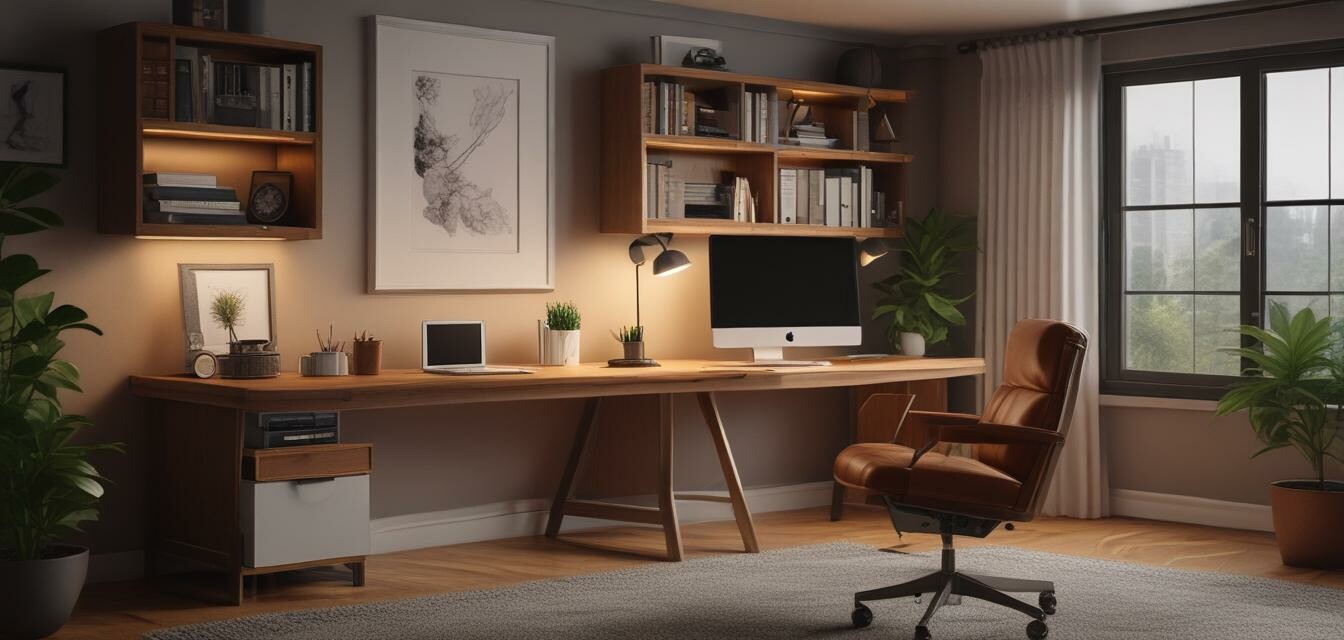
The Importance of Comfort in Your Home Office
Key Takeaways
- Comfort is key for productivity and focus in your home office.
- Ergonomic furniture can prevent health issues and improve work efficiency.
- Design elements such as lighting, colors, and layout can enhance comfort.
- Personalizing your workspace boosts motivation and creativity.
- Incorporating natural elements can create a calming environment.
Creating a comfortable home office is not just a trend; it is essential for productivity and mental clarity. Many people have transitioned to remote work, and the way you set up your workspace can significantly impact your work performance. This article explores the importance of comfort in your home office and provides actionable tips to achieve a welcoming and functional space.
Why Comfort Matters
Comfort in the home office directly correlates to productivity levels, health, and overall happiness at work. A comfortable environment fosters concentration and allows you to focus for extended periods. Let's dive deeper into the reasons why comfort should be a top priority.
1. Improves Productivity
Enhancing your comfort while working can lead to improved efficiency. When you are not distracted by discomfort, you can concentrate more effectively on tasks.
2. Prevents Health Issues
Investing in ergonomic furniture, including chairs and desks, helps reduce the risk of repetitive strain injuries and promotes better posture. You can check out our article on buying ergonomic furniture for practical guidance.
3. Enhances Creativity and Motivation
A pleasant and comfortable workspace can boost your creativity. When you enjoy being in your environment, you are more likely to feel motivated to perform at your best.
Key Elements of Comfort in Your Home Office
Several key elements contribute to comfort in your home office. Below is a comprehensive table of essential factors:
| Element | Description |
|---|---|
| Ergonomic Chair | Supports your back and promotes proper posture while working for long hours. |
| Desk Height | A desk that is adjustable or fits your height can prevent strain on your neck and wrists. |
| Lighting | Good lighting reduces eye strain; natural light is ideal. |
| Color Scheme | Colors like blue and green are calming, helping to create a soothing work environment. |
| Personal Touches | Incorporate items like plants, pictures, or art to make the space feel personal and inviting. |
Tips for Creating a Comfortable Home Office
Beginner's Guide to Comfort
- Choose the Right Furniture: Invest in high-quality ergonomic chairs and desks designed for comfort.
- Optimize Your Layout: Arrange your office in a way that enhances accessibility and convenience.
- Proper Lighting: Utilize a combination of natural light and adjustable lamps to maintain bright and pleasant work conditions.
- Add Soft Textures: Consider adding rugs, cushions, or throws to enhance the coziness of your office.
- Incorporate Plants: Adding greenery can boost your mood and promote a peaceful atmosphere.
Personalizing Your Space
Bringing your personality into your workspace can also enhance comfort. Here are a few ideas:
- Add Art: Hang artwork that inspires or relaxes you.
- Use Color: Paint your walls or use decor that reflects your personality.
- Display Achievements: Show off your achievements to motivate yourself.
- Digital Solutions: Use apps and gadgets that help organize and streamline your work process.
The Role of Natural Elements
Integrating natural elements into your home office can create a serene atmosphere conducive to work. Consider the following:
- Incorporate Natural Light: Position your desk near windows to take advantage of sunlight.
- Add Plants: Bring in houseplants that require low maintenance and purify the air.
- Use Natural Materials: Decorate with wood, bamboo, or stone to add an organic feel to your office.
Conclusion
Designing a comfortable home office is vital for creating an effective workspace. By focusing on ergonomic furniture, layout optimization, and effective use of color and light, you can set up an environment that enhances productivity and creativity. Personal touches and natural elements bring the space to life, making it a reflection of your style and preferences.
Pros
- Boosted productivity and focus.
- Reduced risk of health issues from ergonomic furniture.
- Increased motivation and creativity.
- Comfortable work environment tailored to personal preferences.
Cons
- Initial investment costs for quality furniture.
- Time and effort required to personalize and organize space.
For more information on designing your workspace, feel free to visit our blog for latest trends in home office furniture and more tips. With the right approach, you can create a productive, comfortable space that helps you thrive in your professional life!